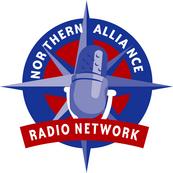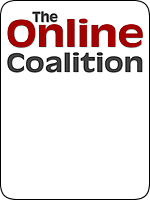
« Easter With The Family | Main | The Immigration Backlash »
After running an oft-cited article last week that claimed Iran was ten years away from a nuclear weapon, the New York Times shifts course this morning and reports that the Islamic Republic has a few shortcuts up its sleeve. William Broad and David Sanger explain how Mahmoud Ahmadinejad intends to shave significant time off of their development cycle:
Of all the claims that Iran made last week about its nuclear program, a one-sentence assertion by its president has provoked such surprise and concern among international nuclear inspectors they are planning to confront Tehran about it this week.The assertion involves Iran's claim that even while it begins to enrich small amounts of uranium, it is pursuing a far more sophisticated way of making atomic fuel that American officials and inspectors say could speed Iran's path to developing a nuclear weapon.
Iran has consistently maintained that it abandoned work on this advanced technology, called the P-2 centrifuge, three years ago. Western analysts long suspected that Iran had a second, secret program — based on the black market offerings of the renegade Pakistani nuclear engineer Abdul Qadeer Khan — separate from the activity at its main nuclear facility at Natanz. But they had no proof.
Then on Thursday, President Mahmoud Ahmadinejad said that Tehran was "presently conducting research" on the P-2 centrifuge, boasting that it would quadruple Iran's enrichment powers. The centrifuges are tall, thin machines that spin very fast to enrich, or concentrate, uranium's rare component, uranium 235, which can fuel nuclear reactors or atom bombs. ...
"This is a much better machine," a European diplomat said of the advanced centrifuge, which was a centerpiece of Pakistan's efforts to build its nuclear weapons and was found in 2004 in Libya, when that country gave up its nuclear program. The diplomat added that the Iranians, among other questions, will now have to explain whether Mr. Ahmadinejad was right, and if so, whether they recently restarted the abandoned program or have been pursuing it in secret for years.
If Iran moved beyond research and actually began running the machines, it could force American intelligence agencies to revise their estimates of how long it would take for Iran to build an atom bomb — an event they now put somewhere between 2010 and 2015.
The P-2 has the capability of enriching uranium exponentially faster than the P-1 centrifuges that Iran acquired from the Khan network in the 1990s. Prior to this, Iran had only been thought to have the first-generation centrifuge, which accounted for the long estimates of Iran's development cycle. Now, however, Pakistan believes that Khan may have worked with Iran on actual development of the P-2 rather than just giving them the plans, as Iran claimed two years ago. Khan was arrested just before attempting to travel to Iran in 2001 on a secret mission that he has still left unclarified with Pakistani officials, and the Pakistanis have re-opened the investigation into his dealings with Teheran.
When Libya surrendered its nuclear program in 2004, Gaddafi's program had P-2 centrifuges from Khan, as did North Korea. Khan's lieutenant, B.S.A. Tahir, has told investigators from prison that the Iranians got much more P-2 technology than Teheran has admitted. Khan also sold Libya a complete Chinese nuclear bomb, and admitted to supplying Iran with instructions on how to make a perfect uranium sphere. The Iranians will not comment on whether those plans came along with a working model as they did with the Libyans. The Iranians deny receiving actual P-2 centrifuges from Khan, but it would appear that they would have been Khan's only clients to have struck out on that score. And, as Condoleezza Rice reminds us, Khan did not sell technology for nuclear reactors and the peaceful generation of civilian energy.
All of this points toward a faster development cycle for Iran than anyone has predicted. If they develop a P-2 centrifuge cascade and have plans and a working model on which to build a design, the Iranians only need the fissile material itself in order to produce nuclear weapons. Their existing cascade has been assumed to be P-1 technology, but the Iranians have busied themselves with secret work at Ishfahan and Natanz to fortify and expand both facilities while refusing to answer IAEA questions about their work on the P-2.
If the Iranians have the P-2 technology, they can create fissile material much faster and in greater quantities than has been reported previously. When they have enough, they will move directly into weapons production, and that will not be in 2015. That could well be next year.
Sphere ItTrackback Pings
TrackBack URL for this entry is

captain*at*captainsquartersblog.com


My Other Blog!
E-Mail/Comment/Trackback Policy
Comment Moderation Policy - Please Read!
Skin The Site








Hugh Hewitt
Captain's Quarters
Fraters Libertas
Lileks
Power Line
SCSU Scholars
Shot In The Dark
Northern Alliance Radio Network
Northern Alliance Live Streaming!



Des Moines Register
International Herald Tribune
The Weekly Standard
Drudge Report
Reason
The New Republic
AP News (Yahoo! Headlines)
Washington Post
Guardian Unlimited (UK)
New York Times
Los Angeles Times
OpinionJournal
Pioneer Press
Minneapolis Star-Tribune
MS-NBC
Fox News
CNN

Design & Skinning by:
m2 web studios
blog advertising

- dave on Another National Health Care System Horror Story
- brooklyn on Hillary Not Hsu Happy
- rbj on Hillary Not Hsu Happy
- Robin S on Requiem For A Betrayed Hero
- Ken on Hillary Not Hsu Happy
- Robin S. on Requiem For A Betrayed Hero
- RBMN on Hillary Not Hsu Happy
- NoDonkey on Another National Health Care System Horror Story
- Robin Munn on Fred Thompson Interview Transcript
- filistro on When Exactly Did Art Die?










